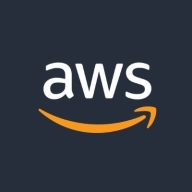

Azure Data Factory and AWS Lake Formation are competing cloud services in managing and orchestrating data workflows. Azure Data Factory seems to have an advantage with superior pricing and customer support but AWS Lake Formation's robust features justify its cost for those prioritizing comprehensive capabilities.
Features: Azure Data Factory offers entrenched integration options across various platforms, intuitive data mapping, and transformation capabilities with ease of use. AWS Lake Formation provides a focused system for setting up secure data lakes with automated data cataloging and fine-grained access control, establishing a strong data governance framework.
Room for Improvement: Azure Data Factory could improve its security features and offer more detailed monitoring capabilities. Expanding built-in connectors for even wider integration and enhancing real-time streaming support could also be beneficial. AWS Lake Formation might focus on streamlining its initial setup and improving user interface simplicity. Offering enhanced support for data analysis tools and additional automation features could further elevate its service.
Ease of Deployment and Customer Service: Azure Data Factory enables quick deployment with agility and receives praise for rapid customer service responses. AWS Lake Formation requires more setup time due to its emphasis on security and data governance, suitable for businesses needing extensive formulations but offers a thorough data management process.
Pricing and ROI: Azure Data Factory presents attractive pricing with low initial setup costs, promoting a favorable ROI for enterprises needing cost-effective solutions. AWS Lake Formation involves higher initial costs, which are balanced by its valuable data governance capabilities, rendering it appealing for businesses focusing on security and oversight.
| Product | Market Share (%) |
|---|---|
| Azure Data Factory | 6.8% |
| AWS Lake Formation | 5.5% |
| Other | 87.7% |


| Company Size | Count |
|---|---|
| Small Business | 3 |
| Midsize Enterprise | 2 |
| Large Enterprise | 15 |
| Company Size | Count |
|---|---|
| Small Business | 31 |
| Midsize Enterprise | 19 |
| Large Enterprise | 55 |
AWS Lake Formation is a service that makes it easy to set up a secure data lake in days. A data lake is a centralized, curated, and secured repository that stores all your data, both in its original form and prepared for analysis.
Azure Data Factory efficiently manages and integrates data from various sources, enabling seamless movement and transformation across platforms. Its valuable features include seamless integration with Azure services, handling large data volumes, flexible transformation, user-friendly interface, extensive connectors, and scalability. Users have experienced improved team performance, workflow simplification, enhanced collaboration, streamlined processes, and boosted productivity.
We monitor all Cloud Data Warehouse reviews to prevent fraudulent reviews and keep review quality high. We do not post reviews by company employees or direct competitors. We validate each review for authenticity via cross-reference with LinkedIn, and personal follow-up with the reviewer when necessary.